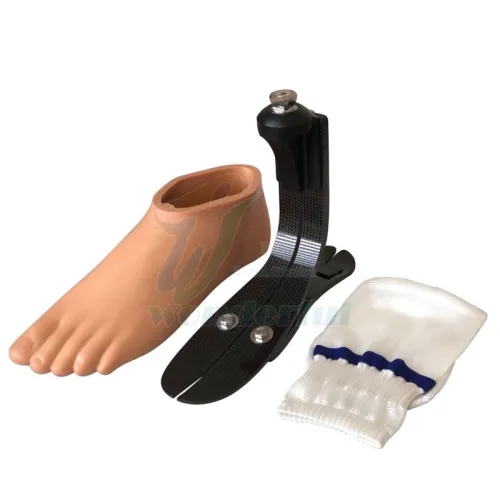Nov. 17, 2023
Health & Medical
Lower limb prosthetics have become a lifeline for individuals who have experienced the loss of a leg due to various reasons, such as accidents or medical conditions. These prosthetic devices are designed to provide users with mobility, support, and a sense of normalcy in their daily lives. Let's delve into the world of lower limb prostheses to understand the most common types, materials used, challenges faced by users, and the exciting advancements shaping the future of prosthetics.
A lower limb prosthesis is an artificial device designed to replace a missing part of the leg. It plays a crucial role in restoring mobility and function for individuals who have undergone lower limb amputation.
The significance of lower limb prosthetics extends beyond physical function; it contributes to the psychological well-being and overall quality of life for amputees.

One of the most common types, the transtibial prosthesis, replaces the lower part of the leg below the knee. Its design focuses on providing natural movement and flexibility.
For individuals with above-knee amputations, the transfemoral prosthesis offers support and stability. It involves a socket, knee joint, and sometimes an ankle joint.
Symes prostheses are less common but involve a unique amputation technique, preserving the heel pad. This type provides a natural walking motion.
Designed for individuals who have partial foot amputations, this prosthesis aims to restore balance and maintain a more natural gait.
Modern lower limb prostheses often incorporate carbon fiber, offering a balance of strength and flexibility. This material is lightweight, contributing to improved comfort.
Used in structural components, titanium provides durability without adding excessive weight to the prosthesis.
Certain prosthetic components are made from high-strength plastics, ensuring both resilience and cost-effectiveness.
The Lower Limb Prosthetic Socket is a crucial component, connecting the prosthetic limb to the user's residual limb. Various designs cater to individual needs for comfort and stability.
Prosthetic suspension methods, such as suction or straps, play a vital role in ensuring the prosthesis stays securely attached during movement.
Different knee joint mechanisms offer varying levels of stability and adaptability, accommodating users with diverse activity levels.
Ankle joints contribute to a natural walking pattern, absorbing shock and allowing for smooth transitions during gait.
Featured content:Achieving the right balance of comfort and fit is a common challenge. Regular adjustments and consultations with prosthetists are necessary for optimal performance.
While prosthetics enhance mobility, certain activities may pose challenges. Overcoming these limitations requires adaptive strategies and ongoing support.
Adjusting to life with a lower limb prosthesis can be emotionally challenging. Support networks and counseling services are essential for mental well-being.
Advancements in bionic prostheses allow users to control their artificial limbs with unprecedented precision, mimicking natural movements.
Integration with smart technologies enhances functionality, providing real-time data feedback and adaptability to different terrains.
The concept of osseointegration involves surgically implanting the prosthesis directly into the bone, creating a more natural and stable connection.
Basic prosthetic models cater to individuals with budget constraints, offering essential functionality at a lower cost.
Advanced prosthetic technologies come at a higher price point, offering cutting-edge features and customization options for users seeking optimal performance.
Deciding on the right prosthesis involves consultations with healthcare professionals, prosthetists, and physical therapists to tailor the solution to individual needs.
Modern prosthetics offer a range of customization options, allowing users to personalize their devices for both aesthetic and functional purposes.
Sharing success stories of individuals thriving with lower limb prosthetics inspires others and showcases the possibilities despite challenges.
Highlighting examples of individuals overcoming challenges with the support of prosthetic technology emphasizes resilience and determination.
In conclusion, the world of lower limb prosthetics continues to evolve, offering innovative solutions that empower individuals with limb loss. From basic models to cutting-edge bionic limbs, the options are vast, providing users with the opportunity to lead fulfilling lives. As technology advances, the future holds even more promise for enhanced mobility and seamless integration with daily activities.
Featured content:Previous: What is the purpose of medical pu foam?
Next: Unlocking the Power of L-Carnitine Gummy for Weight Loss
Related Articles
If you are interested in sending in a Guest Blogger Submission,welcome to write for us!
All Comments ( 0 )